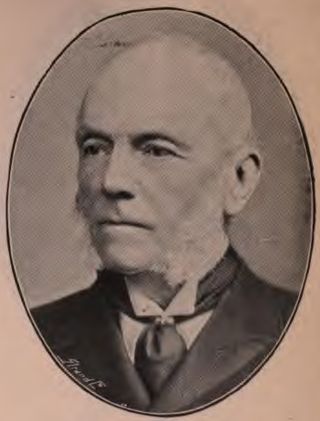
There have been three Baronetcies created for persons with the surname Cotton, all in the Baronetage of England. One creation is extant as of 2008.
There have been ten baronetcies created for persons with the surname Browne, six in the Baronetage of Great Britain, three in the Baronetage of Ireland and one in the Baronetage of Nova Scotia. Only one creation is extant as of 2010. Three of the creations were for members of the Browne family headed by the Viscount Montagu.

There have been two baronetcies created for persons with the surname Aston, both in the Baronetage of England. Both creations are extinct.

There have been two baronetcies created for persons with the surname Alston, both in the Baronetage of England. Both creations are extinct.

There have been twenty one baronetcies created for persons with the surname Williams, eight in the Baronetage of England, three in the Baronetage of Great Britain and ten in the Baronetage of the United Kingdom. Only six of the creations are extant as of 2017.
There have been three baronetcies created for persons with the surname Everard, one in the Baronetage of Ireland, one in the Baronetage of England and one in the Baronetage of the United Kingdom. Only one creation is extant as of 2010.
There have been seven baronetcies created for persons with the surname Powell, five in the Baronetage of England and two in the Baronetage of the United Kingdom. Only one creation is extant as of 2007.

The Worsley family is an English family that is derived from Sir Elias de Workesley, a Norman knight who was a youth at the time of the Norman conquest. He later accompanied Duke Robert II of Normandy on the First Crusade and was buried at Rhodes.

There have been two baronetcies created for different branches of the Throckmorton family, 6th cousins, both descended from Sir John Throckmorton, Under-Treasurer of England temp. King Henry VI (1422–1461). Both titles, which were in the Baronetage of England, are now extinct. The Throckmortons, originally of Throckmorton near Pershore, Worcestershire, trace their history back to the 12th century. In 1409 Sir John de Throckmorton, Under-Treasurer of England, married Eleanor Spinney, daughter and heiress of Guy Spinney of Coughton, Warwickshire, where the senior branch of the family, which bore the junior baronetcy, became established. The Coughton estate included in 1968 a dower house named "Spiney House, Coughton", named after that family. The senior Throckmorton Baronetcy, of Tortworth in the County of Gloucester, was created in the Baronetage of England on 29 June 1611 for William Throckmorton, of Coss Court, Tortworth, Gloucestershire, sixth in descent from John Throckmorton, younger son of Sir John Throckmorton, Under-Treasurer of England. The third Baronet sat as Member of Parliament for Gloucestershire and Wotton Basset. The title became extinct on the death of the fourth Baronet in a duel in 1682.

The Holte Baronetcy, of Aston in the County of Warwick, was a title in the Baronetage of England. It was created on 25 November 1611 for Sir Thomas Holte, of Aston Hall, then in Warwickshire. He was High Sheriff of Warwickshire in 1599 and had been knighted by King James I in 1603. He was succeeded by his grandson, the second Baronet. He was Member of Parliament for Warwickshire. The third and sixth Baronets also represented Warwickshire in Parliament while the fifth Baronet was Member of Parliament for Lichfield. The title became extinct on the death of the sixth Baronet in 1782 and the substantial estate was broken up, under an Act of Parliament of 1817, in order to meet the interests of the various claimants.

There have been four baronetcies created for members of the ancient House of Beaumont, all in the Baronetage of England. All four creations are extinct or dormant.
There have been two baronetcies created in the Baronetage of England for members of the Colepeper family of Kent and Sussex. Both are extinct.

The Hardres Baronetcy, of Hardres Court in the County of Kent, was a title in the Baronetage of England. It was created on 3 June 1642 for Sir Richard Hardres. The fourth Baronet, Sir William Hardres, was Member of Parliament for Kent and Canterbury. The title became extinct on the death of the fifth Baronet, William Hardres II, in 1764.

Sir Thomas Palmer, 4th Baronet, of Wingham was a British landowner and Whig politician who sat in the House of Commons between 1708 and 1723.

There have been seven baronetcies created for persons with the surname Herbert, three in the Baronetage of England, one in the Baronetage of Ireland and three in the Baronetage of the United Kingdom. All creations are extinct.

Sir Thomas Palmer, 1st Baronet (1540–1626), 'the Travailer,’ was an English knight and politician.

There have been five baronetcies created for persons with the surname Morgan, two in the Baronetage of England, one in the Baronetage of Great Britain and two in the Baronetage of the United Kingdom. All five creations are extinct.

The Davers Baronetcy, of Rougham in the County of Suffolk, was a title in the Baronetage of England. It was created on 12 May 1682 for Robert Davers, who had made a great fortune in Barbados as a plantation owner before acquiring the Rougham estate in Suffolk. The second and fourth Baronets represented Bury St Edmunds and Suffolk in Parliament. The sixth Baronet sat as Member of Parliament for Weymouth and Bury St Edmunds. Despite having an alleged nine illegitimate children, the 6th Baronet left his estates to his nephew, Frederick Hervey, 1st Marquess of Bristol, and his baronetcy became extinct.

There have been three baronetcies created for persons with the surname Meredith, one in the Baronetage of England, one in the Baronetage of Nova Scotia and one in the Baronetage of the United Kingdom. Two of the creations are extinct while one is dormant.
There have been two baronetcies created for persons with the surname Garrard, both in the Baronetage of England. Both creations are extinct.














